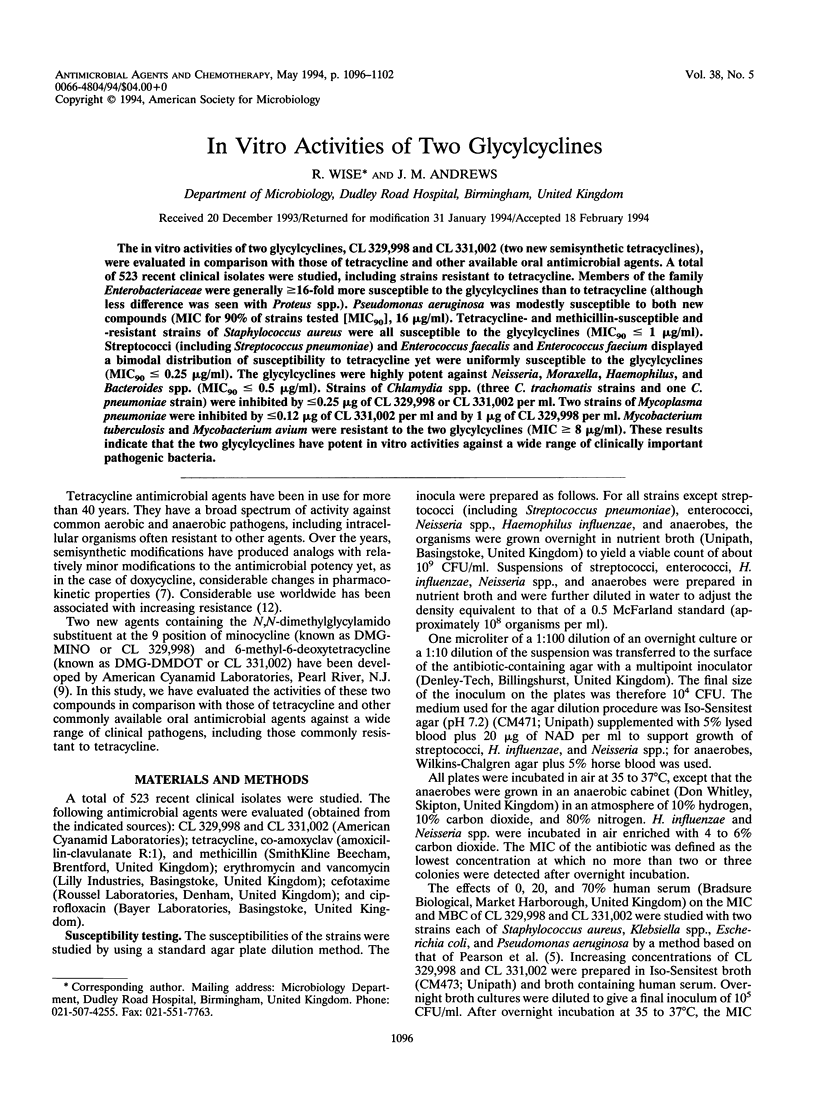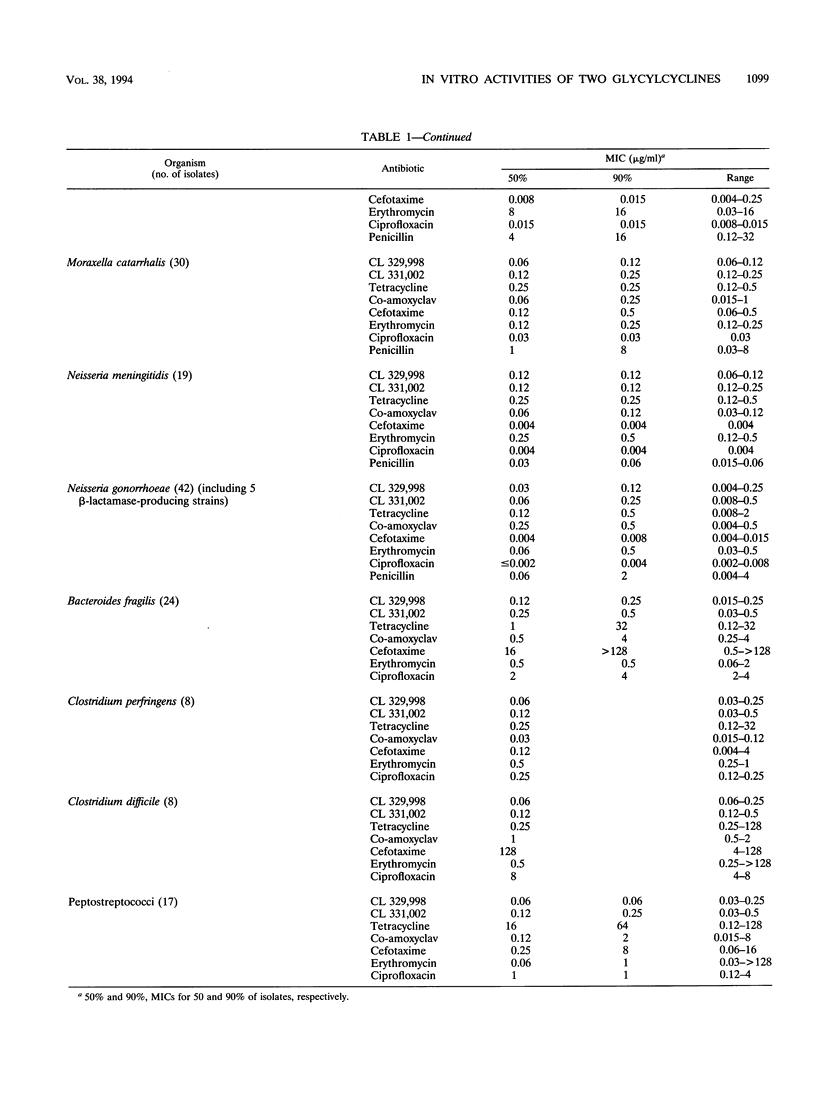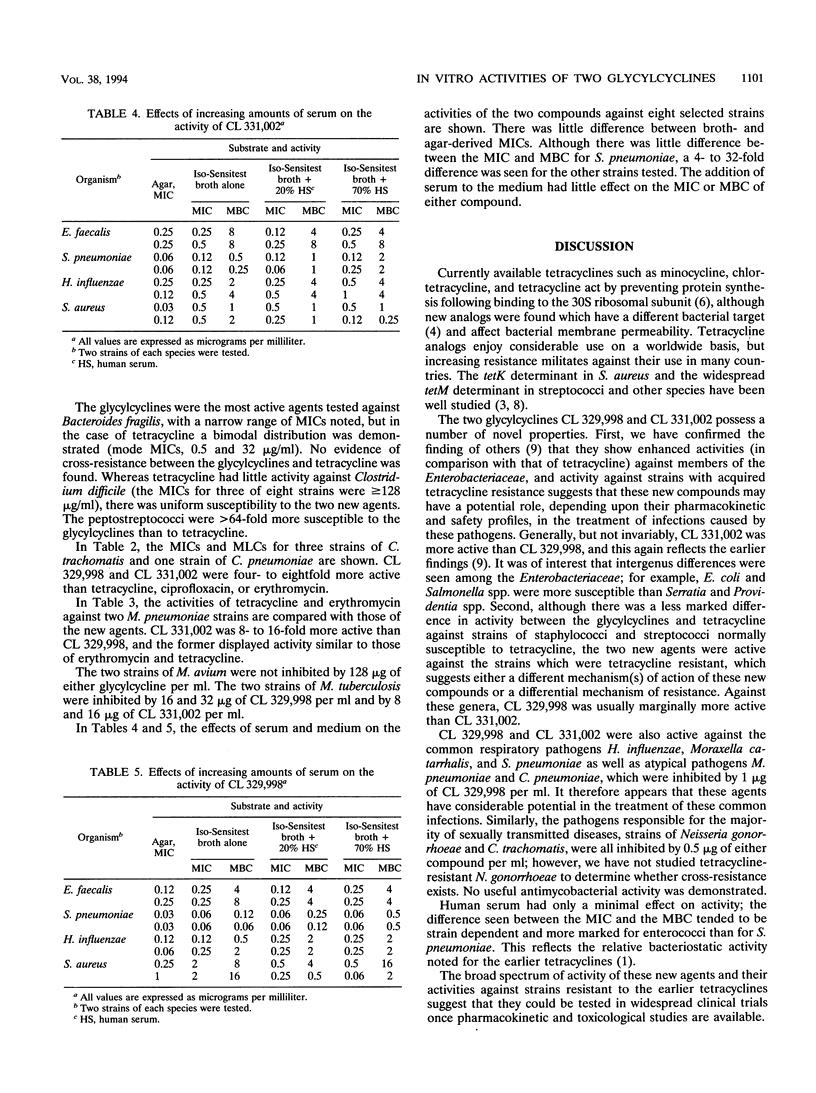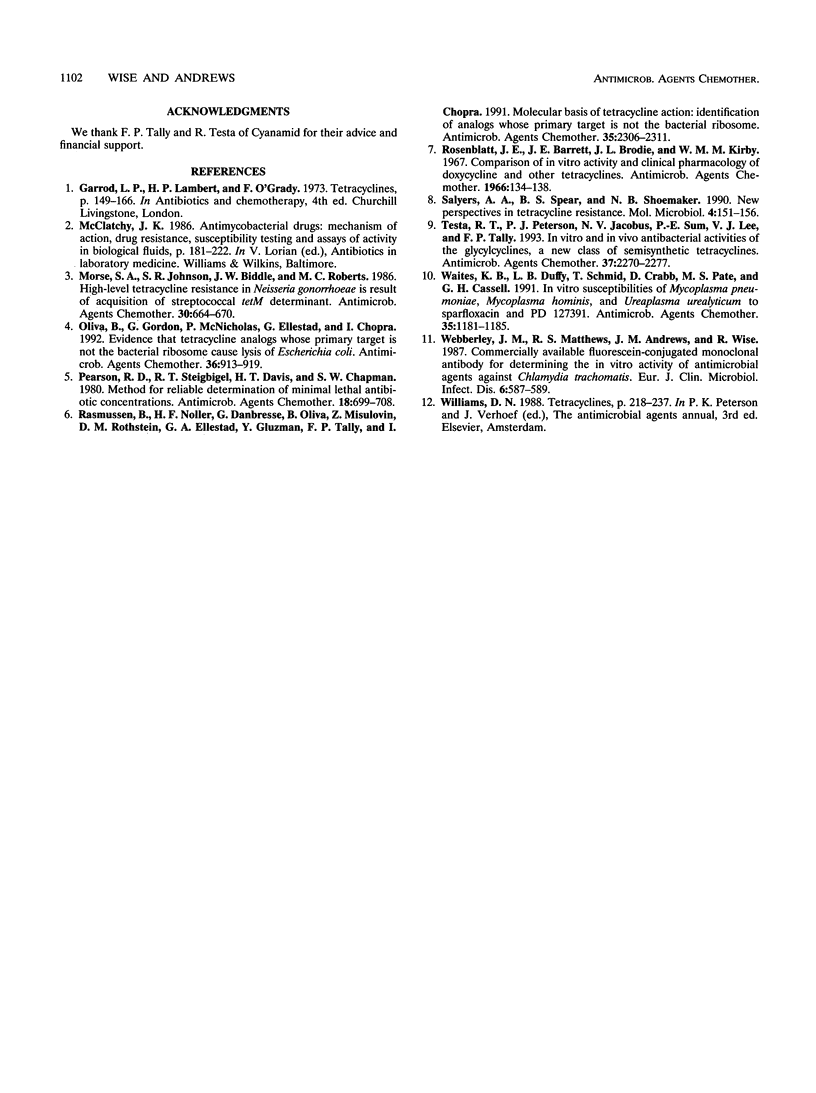Abstract
The in vitro activities of two glycylcyclines, CL 329,998 and CL 331,002 (two new semisynthetic tetracyclines), were evaluated in comparison with those of tetracycline and other available oral antimicrobial agents. A total of 523 recent clinical isolates were studied, including strains resistant to tetracycline. Members of the family Enterobacteriaceae were generally > or = 16-fold more susceptible to the glycylcyclines than to tetracycline (although less difference was seen with Proteus spp.). Pseudomonas aeruginosa was modestly susceptible to both new compounds (MIC for 90% of strains tested [MIC90], 16 micrograms/ml). Tetracycline- and methicillin-susceptible and -resistant strains of Staphylococcus aureus were all susceptible to the glycylcyclines (MIC90 < or = 1 microgram/ml). Streptococci (including Streptococcus pneumoniae) and Enterococcus faecalis and Enterococcus faecium displayed a bimodal distribution of susceptibility to tetracycline yet were uniformly susceptible to the glycylcyclines (MIC90 < or = 0.25 microgram/ml). The glycylcyclines were highly potent against Neisseria, Moraxella, Haemophilus, and Bacteroides spp. (MIC90 < or = 0.5 microgram/ml). Strains of Chlamydia spp. (three C. trachomatis strains and one C. pneumoniae strain) were inhibited by < or = 0.25 microgram of CL 329,998 or CL 331,002 per ml. Two strains of Mycoplasma pneumoniae were inhibited by < or = 0.12 microgram of CL 331,002 per ml and by 1 microgram of CL 329,998 per ml. Mycobacterium tuberculosis and Mycobacterium avium were resistant to the two glycylcyclines (MIC > or = 8 micrograms/ml). These results indicate that the two glycylcyclines have potent in vitro activities against a wide range of clinically important pathogenic bacteria.
Full text
PDF






Selected References
These references are in PubMed. This may not be the complete list of references from this article.
- Morse S. A., Johnson S. R., Biddle J. W., Roberts M. C. High-level tetracycline resistance in Neisseria gonorrhoeae is result of acquisition of streptococcal tetM determinant. Antimicrob Agents Chemother. 1986 Nov;30(5):664–670. doi: 10.1128/aac.30.5.664. [DOI] [PMC free article] [PubMed] [Google Scholar]
- Oliva B., Gordon G., McNicholas P., Ellestad G., Chopra I. Evidence that tetracycline analogs whose primary target is not the bacterial ribosome cause lysis of Escherichia coli. Antimicrob Agents Chemother. 1992 May;36(5):913–919. doi: 10.1128/aac.36.5.913. [DOI] [PMC free article] [PubMed] [Google Scholar]
- Pearson R. D., Steigbigel R. T., Davis H. T., Chapman S. W. Method of reliable determination of minimal lethal antibiotic concentrations. Antimicrob Agents Chemother. 1980 Nov;18(5):699–708. doi: 10.1128/aac.18.5.699. [DOI] [PMC free article] [PubMed] [Google Scholar]
- Rasmussen B., Noller H. F., Daubresse G., Oliva B., Misulovin Z., Rothstein D. M., Ellestad G. A., Gluzman Y., Tally F. P., Chopra I. Molecular basis of tetracycline action: identification of analogs whose primary target is not the bacterial ribosome. Antimicrob Agents Chemother. 1991 Nov;35(11):2306–2311. doi: 10.1128/aac.35.11.2306. [DOI] [PMC free article] [PubMed] [Google Scholar]
- Salyers A. A., Speer B. S., Shoemaker N. B. New perspectives in tetracycline resistance. Mol Microbiol. 1990 Jan;4(1):151–156. doi: 10.1111/j.1365-2958.1990.tb02025.x. [DOI] [PubMed] [Google Scholar]
- Testa R. T., Petersen P. J., Jacobus N. V., Sum P. E., Lee V. J., Tally F. P. In vitro and in vivo antibacterial activities of the glycylcyclines, a new class of semisynthetic tetracyclines. Antimicrob Agents Chemother. 1993 Nov;37(11):2270–2277. doi: 10.1128/aac.37.11.2270. [DOI] [PMC free article] [PubMed] [Google Scholar]
- Waites K. B., Duffy L. B., Schmid T., Crabb D., Pate M. S., Cassell G. H. In vitro susceptibilities of Mycoplasma pneumoniae, Mycoplasma hominis, and Ureaplasma urealyticum to sparfloxacin and PD 127391. Antimicrob Agents Chemother. 1991 Jun;35(6):1181–1185. doi: 10.1128/aac.35.6.1181. [DOI] [PMC free article] [PubMed] [Google Scholar]
- Webberley J. M., Matthews R. S., Andrews J. M., Wise R. Commercially available fluorescein-conjugated monoclonal antibody for determining the in vitro activity of antimicrobial agents against Chlamydia trachomatis. Eur J Clin Microbiol. 1987 Oct;6(5):587–589. doi: 10.1007/BF02014256. [DOI] [PubMed] [Google Scholar]


